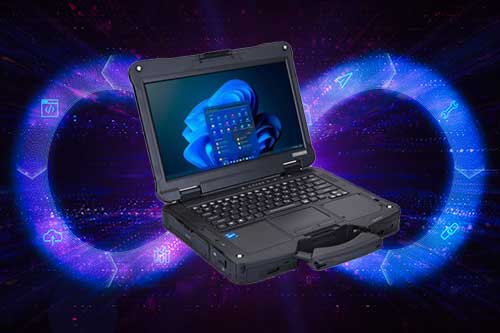
The life cycle length for rugged computers, tablets, handheld devices, and cellular modems can vary depending on several factors, including the specific product, industry, and technological advancements. Here’s a general overview of what influences the life cycle length for these devices:
- Budget Planning: Understanding the life cycle allows organizations to budget effectively for equipment replacement. By knowing when devices are likely to reach the end of their useful life, organizations can allocate funds for replacements in advance, reducing the risk of unexpected expenses.
- Maximizing ROI: Knowing the life cycle helps organizations maximize the return on investment (ROI) for their rugged devices. It ensures that devices are used efficiently throughout their operational life, avoiding both premature replacement and continued use of outdated technology.
- Technology Compatibility: Mapping out the life cycle helps ensure that devices remain compatible with evolving software and network technologies. Using outdated devices can lead to compatibility issues, security vulnerabilities, and decreased productivity.
- Maintaining Performance: As rugged devices age, their performance can degrade. Mapping out the life cycle allows organizations to proactively replace devices before they become a bottleneck in operations, helping to maintain productivity and efficiency.
- Compliance and Regulations: In some industries, compliance with specific regulations or standards may dictate equipment replacement schedules. Failing to replace equipment within the required time frame can result in non-compliance and potential legal or regulatory issues.
- Risk Mitigation: Older rugged devices are more prone to failures and breakdowns, which can disrupt critical operations. Mapping out the life cycle allows organizations to identify and mitigate risks associated with outdated technology.
- Competitive Advantage: Staying up-to-date with technology can provide a competitive advantage. Using the latest rugged devices can improve efficiency, data accuracy, and the ability to adapt to changing business needs or industry demands.
- User Satisfaction: Outdated technology can frustrate users, leading to decreased morale and productivity. Keeping equipment up to date can contribute to a more positive work environment.
- Environmental Considerations: Responsible disposal of electronic equipment is important for environmental sustainability. Mapping out the life cycle allows organizations to plan for the proper disposal or recycling of old equipment in an environmentally friendly manner.
- Future-Proofing: Mapping out the life cycle helps organizations plan for future technology needs. It ensures that the organization remains agile and adaptable in a rapidly evolving technology landscape.
In summary, understanding and mapping out the life cycle of rugged laptops, handhelds, tablets, and cellular modems is essential for responsible and strategic purchasing decisions. It helps organizations budget effectively, maximize ROI, maintain performance, ensure compliance, mitigate risks, and stay competitive in their respective industries.
Mapping out the life cycle of rugged laptops, handhelds, tablets, and cellular modems is crucial for informed purchasing decisions. It helps organizations allocate budgets effectively, maximize ROI, ensure technology compatibility, sustain device performance, meet regulatory compliance, mitigate operational risks, enhance user satisfaction, address environmental concerns, and maintain competitiveness in an ever-evolving tech landscape.

